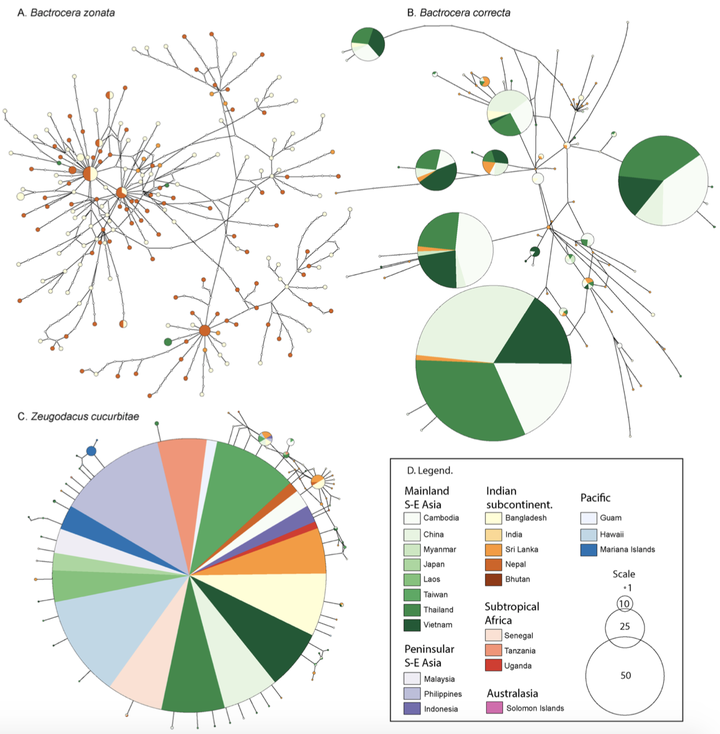Highly variable COI haplotype diversity between three species of invasive pest fruit fly species reflects remarkably incongruent demographic histories
 Image credit: Camiel Doorenweerd
Image credit: Camiel DoorenweerdAbstract
Distance decay principles predict that species with larger geographic ranges would have greater intraspecific genetic diversity than more restricted species. However, invasive pest species may not follow this prediction, with confounding implications for tracking phenomena including original ranges, invasion pathways and source populations. We sequenced an 815 base-pair section of the COI gene for 441 specimens of Bactrocera correcta, 214 B. zonata and 372 Zeugodacus cucurbitae; three invasive pest fruit fly species with overlapping hostplants. For each species, we explored how many individuals would need to be included in a study to sample the majority of their haplotype diversity. We also tested for phylogeographic signal and used demographic estimators as a proxy for invasion potency. We find contrasting patterns of haplotype diversity amongst the species, where B. zonata has the highest diversity but most haplotypes were represented by singletons; B. correcta has ~7 dominant haplotypes more evenly distributed; Z. cucurbitae has a single dominant haplotype with closely related singletons in a ‘star-shape’ surrounding it. We discuss how these differing patterns relate to their invasion histories. None of the species showed meaningful phylogeographic patterns, possibly due to gene-flow between areas across their distributions, obscuring or eliminating substructure.